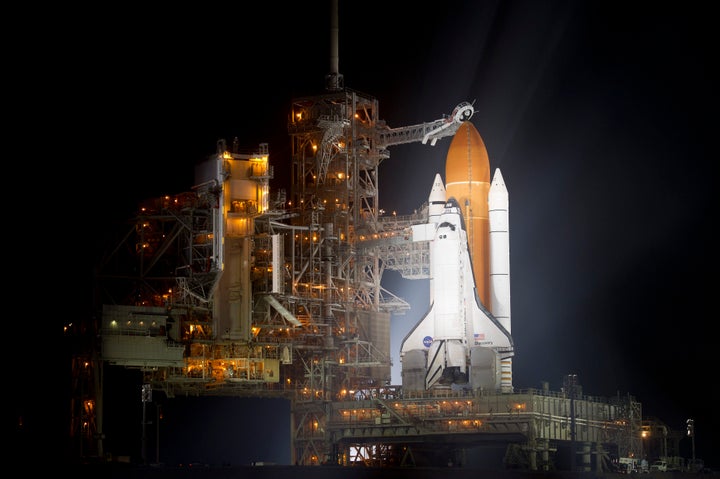
Today, the space shuttle Discovery departed Kennedy Space Center atop a jumbo jet to the Smithsonian Air and Space Museum's Udvar-Hazy Center, where it will become a museum relic. For many, it's agonizing to watch these wonderful machines of yesteryear turn into mere museum exhibits. However, they bring back exciting memories of an adventurous era in space exploration spanning 30 years.
Over three decades, space shuttles have been America's flagship space program. Since inception in 1981, the shuttle launches became so usual that, after a while, not much attention has been paid to the event. The glorious vehicles that created history by carrying humans and cargo to the space are becoming part of history.
Although space shuttles inspired generations of space-gazers and contributed greatly to our national pride and identity, there are many misconceptions about the space shuttles and their missions.
1. There are only 5 space shuttles
In fact, there are 6 space shuttles built. though one of them never went to space as it was not intended to be. The Enterprise was the first space shuttle built, but its role was limited to tests to see how the orbiters would work. It was used in approach and landing tests, but never left the earth's atmosphere. The Columbia and Challenger were lost in accidents. That leaves three remaining shuttles -- Discovery, Endeavor and Atlantis -- as survivors, though they will fly no more.
2. Shuttles can go deep into space
Not really. The shuttles are designed to travel in the low Earth orbit. The orbital altitude of shuttles ranges from 190 miles to 330 miles depending on the mission. However, the question of where space begins is a tricky one. About 60 miles above sea level is considered as the beginning of space, but different layers of Earth's atmosphere can extend much beyond that. There is no unanimous agreement on the boundary of space and Earth's atmosphere. It's a gray area as no formal definition has been established .The best answer is 'between here and there space begins,' depending who answers it. While the U.S. Air Force considers higher than 50 miles as space, the satellites must remain 200 miles and up to maintain permanent orbit around the earth.
3. Sex in space shuttles
As one can expect, many stories and so-called experiments about this topic have been reported by the media to excite or confuse people. NASA vehemently denies any such experiments undertaken by the agency. It's definitely a struggle to even kiss in microgravity environment, let alone have sex, especially when there is no up and down. But the topic will continue to flourish in urban myths considering its innate nature. However, if long-term habitation in space is a priority, all the biological effects including sex in microgravity must be a part of the whole picture.
4. Shuttle program is a waste of money
Yes and no. Some call the program a clunker. Humans have flown in space for about half a century. Billions of dollars have been spent. The benefits may not match the cost dollar-for- dollar. Many experiments have been conducted in space in basic physics, biology, medicine and in many other areas. But the critics argue it could have been done in a cheaper way.
The other side, NASA's annual budget is $18.7 billion through fiscal year 2016, which is much less than the federal government spending on Iraq war that may exceed trillions by now. The program played a big role in creating numerous technological products and made space tourism a reality. Moreover, the shuttle missions helped to build the International Sspace Station and launched Hubble Space Telescope.
5. Space program will end with space shuttles
Many obsolete technologies and inherent risks in the design of the shuttles, along with the relatively higher cost of operation, are among the factors to ground the shuttle fleet. By transferring the low-Earth services to the private sector, NASA can focus on more ambitious future missions to the moon, Mars and asteroids. The agency prefers commercial U.S firms to transport men and cargo to the International Space Station, but in the meantime it has to rely on Russian vehicles to do so. This is definitely the end of shuttle program but the beginning of, hopefully, more exciting space exploration.
To paraphrase a quote, dwelling on the past may be futile but learning from it is worthwhile.
